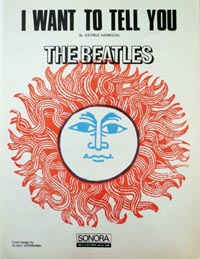
Following the grimly-prancing ballerina, the breakdancer, and the Bach etude aspirer, the final performer took the stage. The performances were earnest but few, and the show sparsely attended, most people presumably having found other ways to spend their leisure hours. Some years ago I was attending a middle-school talent show. What the song details then is not only the stuff of high drama but also the various moods, daily happenings and different viewpoints that make life what it is. Ultimately, the song serves to remind us of our intrinsic alienation, of the lurking imminence of death, and of the passing of time. The song offers a view of a day in the life of not one consciousness but, instead, two separate consciousness. McCartney claimed that this was a “turn on” song, one which aimed to turn people on to the “truth”, particularly in terms of his information is conveyed and how society, time and consciousness operate. Lennon claimed the song was simply about a car crash and its victim. The song resists any sort of simple or ready-made meaning, which is part of its appeal. These narrators, then, can be understood as representing McCartney and Lennon’s radically different understandings of the world, and the song, in turn, offers some measure of insight into the radical discordance between the two. Lennon’s sections of the song offer a narrator who is seeking to understand the principles upon which human reality operates, while McCartney’s bit is narrated by someone who appears to live moment to moment, for the day. While the two songs function as separate entities, they provide a measure of depth to “A Day in the Life” and a sense of sweeping consciousness and epic human drama, which is particularly impressive given the relative shortness of the thing, and the fact that it was the product of two relatively independent and, at least at the time, opposed songwriters.

McCartney’s song fragment, which sets a decidedly different mood than Lennon’s, is placed between the second and third verses of Lennon’s song and serves as a warm remembrance of his youthful school days.ĭue to the numerous references to dreaming, smoking, and turning-on that run throughout the song, the song was banned from radio play in various parts of the world.

#BEATLES SONG ALL THE DAYS OF MY LIFE WE BETTER TOGETHER SERIES#
Lennon’s song is based on of a number of recent newspaper accounts: an article on how there was 1/26th of a pothole for every resident of Blackburn, Lancashire called the “4,000 holes in Blackburn, Lancashire”, a series of articles on the film How I Won the War, and an account of Tara Browne, a friend of the Beatles who was killed in a car accident.


The song is the result of McCartney and Lennon fusing two separate songs into one. Furthermore, the song demonstrates not only the intellectual and musical discord that always underlined McCartney and Lennon’s efforts, but also the incredible music that resulted from their collaborations. I’ve always been taken by it, not only for its sonic depth but for its profound emotional insight into the radically different viewpoints of McCartney and Lennon. If there’s a single song that exemplifies how good the Beatles were, and how gifted McCartney and Lennon were as songwriters, it’s this one. “A Day in the Life” is without a doubt among the finest and most ambitious songs the Beatles recorded.


 0 kommentar(er)
0 kommentar(er)
